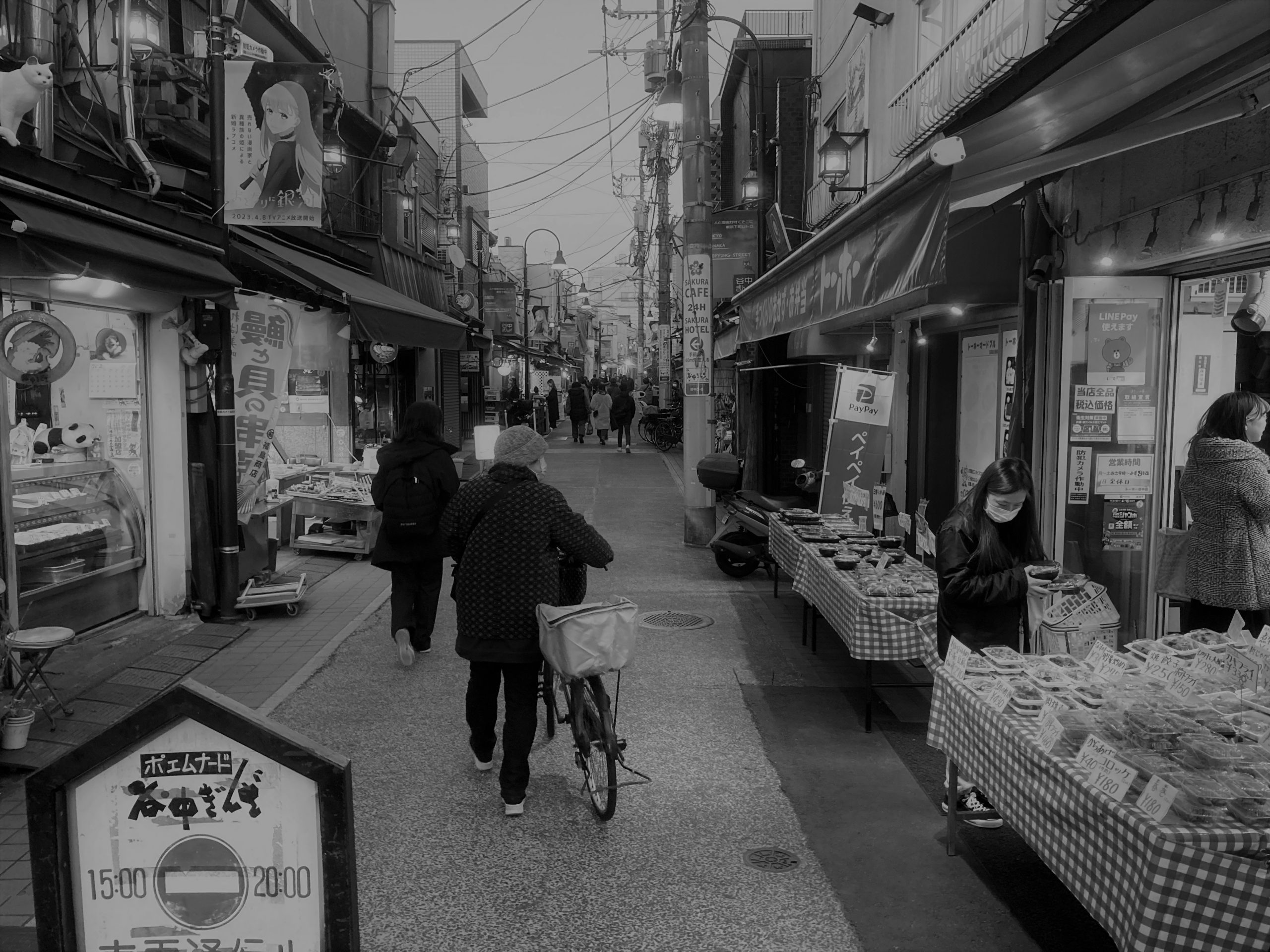Greater Tokyo, with 37.2 million people, is the world’s most populous urban area. After years of experiencing Japan only through the lens of Marunouchi, the ultra-modern city centre (https://www.propertychronicle.com/a-letter-from-tokyo/) my first step to better understanding this intriguing country was exploring Yanaka, part of the capital’s ‘old town’. Yanaka is only five subway stops from the physical perfection of Marunouchi, but the two districts offer complete contrasts between old and new, local and global, low-rise and high-rise. Five stops felt like travelling back five decades.
Yanaka is part of Tokyo’s Shitamachi, (meaning ‘the low city’) a town of temples and shrines, created under the planning policy of the nineteenth century. The district is both low and old, a real rarity in the centre of a dense and frequently rebuilt metropolis. Tokyo was – twice – almost wholly destroyed in the last century, exactly 100 years ago in the firestorms after the 1923 Great Kanto earthquake and then again by the 1945 Allied firebombing. Yanaka escaped not only those two devastations but also demolition and redevelopment during the post-war economic miracle.
A celebrated Japanese proverb says the four things to fear most in life are earthquakes, thunder, fire and fathers (!). Earthquakes are a constant fact of life in a country with over a thousand tremors each year. It is only twelve years since Japan’s strongest recorded earthquake (9.0 on the Richter Scale) and memories remain vivid of the huge tsunami and meltdown of the nuclear reactors at Fukushima, less than 300 km from the capital. With grim satisfaction, most of Tokyo’s built environment was considered to have weathered the severe seismic test of 2011.
That resistance was a credit to Tokyo’s rigorous building code and the technical innovation of Japan’s world-beating earthquake engineers. Even in low-rise Yanaka, some of the most modern structures can levitate by a few centimetres when earth tremors trigger ‘airbags’ below ground. The local streetscape has other icons of modern Tokyo’s built environment such as decorative manhole covers and the yellow-studded walkways for the visually impaired. Yet as Yanaka is a district balancing modernity and history, it also has the sounds and smells of a Buddhist temple and Shinto shrines. For a location in the centre of the world’s most populous urban area, the low city – also known as ‘town of temples’ – certainly has a spiritual feeling.
The old and the new of low-rise Yanaka stand shoulder to shoulder. The charm of the place is the mix of local uses, squeezing together micro-apartments, schools, public baths, open workshops, museums, saké barrel depots and Japanese Love Hotels. Metalworkers in blue overalls rub shoulders with schoolgirls in sharp uniforms, contemplative mourners and chaotic cyclists. Yanaka felt very open with almost no fences, even around the district cemetery. Local also mixes with international – in the warm Northern European hygge of a wooden ‘beerhall’, drinks are served by a tiny Japanese lady in a smart red kimono. Multiple cafés sell French-style food such as galetts and kroks (sic). If the low city is long on character and these cultural paradoxes, it felt short on physical beauty. In my visit (in February), no cherry blossom was on the trees to soften the look of overhead wiring, satellite dishes and air conditioning ducts.
A Ginza is a generic expression for a shopping street. Tokyo’s most famous Ginza is anchored by luxury department stores trading on twelve floors and high-end boutiques in that street pay Japan’s top retail rents. The 70-odd little shops in Yanaka’s pedestrianised Ginza were certainly NOT high-end international retail. Instead, the ad hoc merchandising mixed tables of books and lotus vegetables with racks of clothes, grilled Yakitori skewers and ice-cold cucumbers on sticks. Stray cats wandered past a pet shop intriguingly named “Live Dog”, whilst ceramic cats waved their paws to shoppers – a good luck charm in superstitious Japan. Next to a cluster of high-tech vending machines with 24/7 hot snacks, one store offered a curious merchandising mix of coffee beans and build-your-own Turkish lamps. Another sold green matcha tea in a country where tea is a serious business and the training to become a full Tea Master is as long as that of a surgeon.
Seven Eleven supermarkets and souvenir shops have recently started to nibble away at Yanaka Ginza’s long-established street food offer, but all this animation and sense of community felt pleasingly rooted in time. After the ‘Quest for Perfection’ at Marunouchi, the traditional charms of Yanaka’s local community were a fine first taster of a very different and less perfect Japan.







